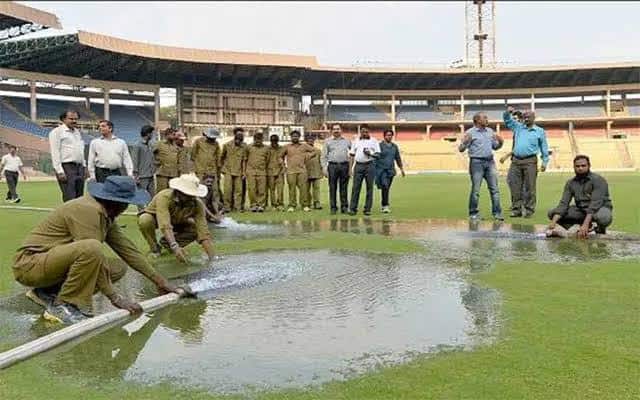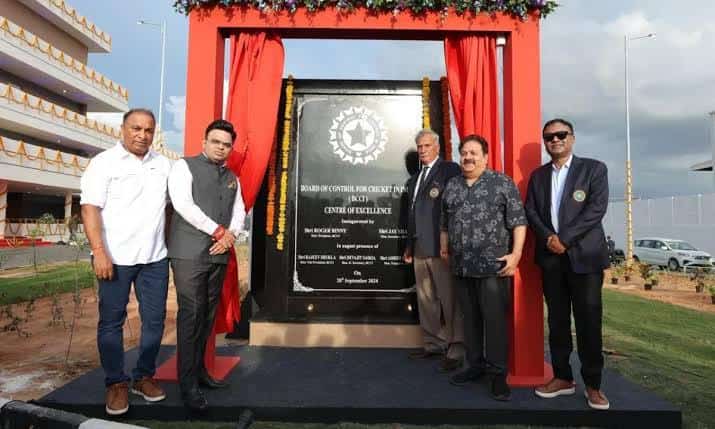The Board of Control for Cricket in India (BCCI) stands as one of the wealthiest governing bodies in the world of cricket. With staggering revenues—like the Rs 11,769 crore earned from the IPL 2023 season alone—it has the financial muscle to improve infrastructure across India. Yet, rain delays continue to plague matches, raising an important question: Why hasn’t the BCCI adopted advanced drainage systems, such as the SubAir system, in all cricket stadiums?
Reality Check to Rain Interruptions
Take the recent Test match between India and Bangladesh in Kanpur as a case in point. After only 35 overs were bowled on Day 1, the second day was completely washed out due to heavy rain. Such interruptions highlight a crucial area for improvement in Indian cricket venues. Despite the BCCI’s immense wealth, the basic infrastructure to deal with weather-related disruptions remains lacking.
SubAir Solution
Among the most effective solutions is the SubAir system, already in use at the M. Chinnaswamy Stadium in Bengaluru. This innovative technology boasts an impressive capability: it can drain around 10,000 litres of water every minute, thanks to its powerful 200-horsepower machine. The rapid drainage helps get the field ready for play almost immediately after a downpour, ensuring that rain does not ruin the cricketing experience.
How SubAir Works?

What sets the SubAir system apart is its unique construction. Instead of traditional soil, the system employs a sand base. Sand drains water much more efficiently than regular soil, reducing the time needed for the ground to dry. Additionally, the system helps aerate the pitch, which promotes healthy grass growth. This dual functionality ensures that the playing surface is always in prime condition.
Why Isn’t SubAir Widespread?
Implementing the SubAir system across all cricket grounds in India presents several challenges. Firstly, the installation process is labour-intensive. The entire field must be excavated and replaced with sand, making the venue unavailable for a duration. Furthermore, India has a diverse range of soil types, which complicates the adaptation of the system. Each stadium may require unique adjustments to accommodate local conditions.
Benefits of Upgrading
Despite these challenges, the advantages of the SubAir system are substantial. By minimizing rain disruptions, the BCCI can enhance the overall cricket experience. Spectators would be more likely to attend matches if they were assured of fewer weather-related interruptions. This could lead to increased ticket sales, higher viewership, and more lucrative sponsorship deals.
Financial Considerations
While it may seem counterintuitive, investing in such advanced drainage technology could ultimately yield financial benefits. By attracting larger crowds and ensuring more games proceed as scheduled, the BCCI stands to gain additional revenue. Moreover, a reliable drainage system can lead to better pitch conditions, benefiting the players and enhancing the quality of the game.
Future-Ready Cricketing Infrastructure

In an age where technology drives progress, the BCCI should embrace innovations that improve the game. By prioritizing the installation of the SubAir system or similar technologies, Indian cricket can move towards a future where matches are less likely to be interrupted by rain. This would not only be a win for players and fans but also for the overall growth of cricket in the country.
FAQs
What is the SubAir system?
The SubAir system is an advanced drainage technology that rapidly removes water from cricket pitches, allowing them to dry quickly after rain.
Why is the SubAir system important for cricket matches?
It minimizes disruptions due to rain, ensuring that matches can resume quickly and maintaining optimal playing conditions.
How does the SubAir system work?
It uses a powerful machine to drain up to 10,000 liters of water per minute and utilizes sand as a base, which drains water more effectively than traditional soil.
Why doesn’t BCCI install the SubAir system in all stadiums?
Installation requires significant groundwork and adaptation to different soil conditions across India, which can be challenging and time-consuming.
What are the benefits of installing the SubAir system?
It leads to fewer rain delays, better pitch quality, enhanced fan experience, and can attract more sponsors and revenue.








